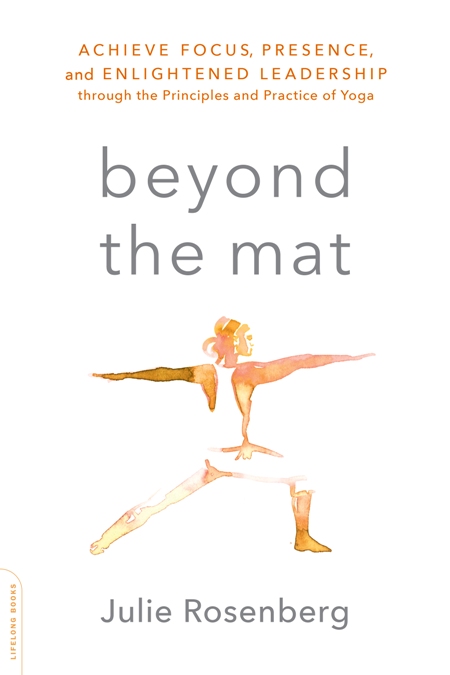
When someone says “yoga,” the first image that comes to mind for most people is a hard-bodied young woman in spandex tights, “working out” on a mat in a local studio contorted into a veritable human pretzel.
We think of women trotting off to class in their Lululemon leggings and fashionable bright tank tops with their yoga mats in tow. We envision stunning displays of flexibility showcased on gorgeous beaches on Instagram. In fact, most people think of yoga as a fitness hobby, a gentler alternative to trendy options like SoulCycle or CrossFit.
But yoga is much more than a workout and a way to keep in shape. The poses—technically asanas, or postures—are just one aspect of a much larger system for optimal living. Running under the often physically challenging postures is a profound, far-reaching philosophy that is a rich, robust technology for personal development.
The Yoga Sutras of Patañjali are central to the teachings of yoga. The word “sutra” comes from the Sanskrit for “threads,” and these are meant as guiding principles for a good life, one full of intention and meaning. They were written around 400 CE by Patañjali, a Hindu scholar who borrowed from various traditions to come up with 196 aphorisms (terse sayings, expressing general truths or principles). The yoga sutras, despite being thousands of years old, are as relevant today as they were in ancient India. They offer ways in which one can develop greater focus, clarity, and self-awareness. The right means are as important as the end goal, according to Patañjali. He enumerates these means as the eight limbs, or stages of yoga for the quest of the soul. The first of these is yama, or universal moral commandments.
The yamas are universal moral and ethical commandments for “right living.” They are guidelines for how we can best show up for our lives, and they apply broadly to our actions, words, and thoughts. The yamas are broken down into five “wise characteristics.”
On the surface, these five wise characteristics may sound familiar to those of us in the West: don’t commit violence (ahimsa), tell the truth (satya), don’t steal what others have (asteya), practice self-restraint (brahmacharya), and take only what is necessary (aparigraha). But unlike our more commonly understood set of rules, the Ten Commandments, the yamas go deeper as rules of morality for society and individuals. Rather than a list of dos and don’ts, the yamas aim to help practitioners develop a powerful set of interpersonal skills, from patience to fearlessness.
These yamas are a roadmap to a good life, and they are just as important to yoga as what happens on the mat. And their applications are wide-ranging.
Think, for example, about the principle of non-violence. Ahimsa literally means not to injure or show cruelty to any living being. However, as adopted in yoga practice and in life beyond the mat, ahimsa is much more than the literal interpretation of nonviolence; it implies that in every situation we should adopt a kind, thoughtful, and considerate attitude and that we should also exercise compassion. It encourages us to stop focusing on our personal ego needs and comparing ourselves to others. And the results from that mind shift can be incredible. We become better people when we learn to practice nonviolence with ourselves, being gentle on ourselves and making sure that we nourish our bodies, souls, and minds in healthy and replenishing ways. We then have more energy for others.
What does life look like when we become kinder to those around us, supporting and promoting family members, friends, and colleagues? What does it mean to have the emotional energy to show people that you generally care about them and respect them, and that you are truly there and present for them? When we take the yamas into our lives, the results can be absolutely transformative on so many levels.
Yes, yoga can take place in a studio or on a mat in your bedroom, but, at its core, yoga is a practical philosophy of self-observation and inner inquiry. The mind comes first; the body is second. So, it’s quite possible to practice yoga without taking out a mat or putting on fashionable clothing or even working up a sweat.
And the very good news—you don’t need to be an ardent ardent yoga practitioner to understand and implement some of the techniques from this ancient tradition. You can do so anytime, anywhere.
Another of the sutras is pratyahara, which means withdrawal and liberation of the mind from the domination of the senses and exterior objects. Practicing pratyahara is critical in today’s world of constant stimulation. And it is possible to practice this by taking just 10 minutes out of your day to be more mindful about what you’re doing. Here are a few easy tips, some of which can be done easily at home, or right at your desk in the middle of the workday:
>> Turn off all electronics and sit in silence for a few minutes, paying attention to your breath and how you are feeling.
>> Sitting with your eyes closed, focus on your breath. When you breathe out, at the end of the exhale, try to breathe out a little bit more, even if you feel your lungs are empty. This is a way to eliminate toxicity of both mind and matter.
>> Eat one meal a day in silence—not in front of the TV or computer—tasting and experiencing every bite.
>> Clear the physical clutter around you. A clean and organized environment can help with “mental tidying” and improve your internal focus.
>> Close your eyes, eliminating outside distractions, and focus inward for 30 seconds several times per day.
>> Take a 10-minute walk in nature and become aware of the sounds.
It is relatively easy to take a yoga class and be “in the zone” for 60 minutes—and then promptly forget about everything the minute you walk out the door and return to your chaotic, overly stimulated life. The challenge is to take all of those lessons with you when you roll up your yoga mat and go home.
Yoga is not exercise; it’s a way of life. It’s so much more than poses. Yoga has the power to transform your life. So, relax, turn off the noise if only for a minute, and take a deep breath.
~
Author: Julie Rosenberg
Image: Author’s own; Alexa Mazzarello/Unsplash
Editor: Catherine Monkman
Copy Editor: Callie Rushton
Social Editor: Callie Rushton








Read 0 comments and reply